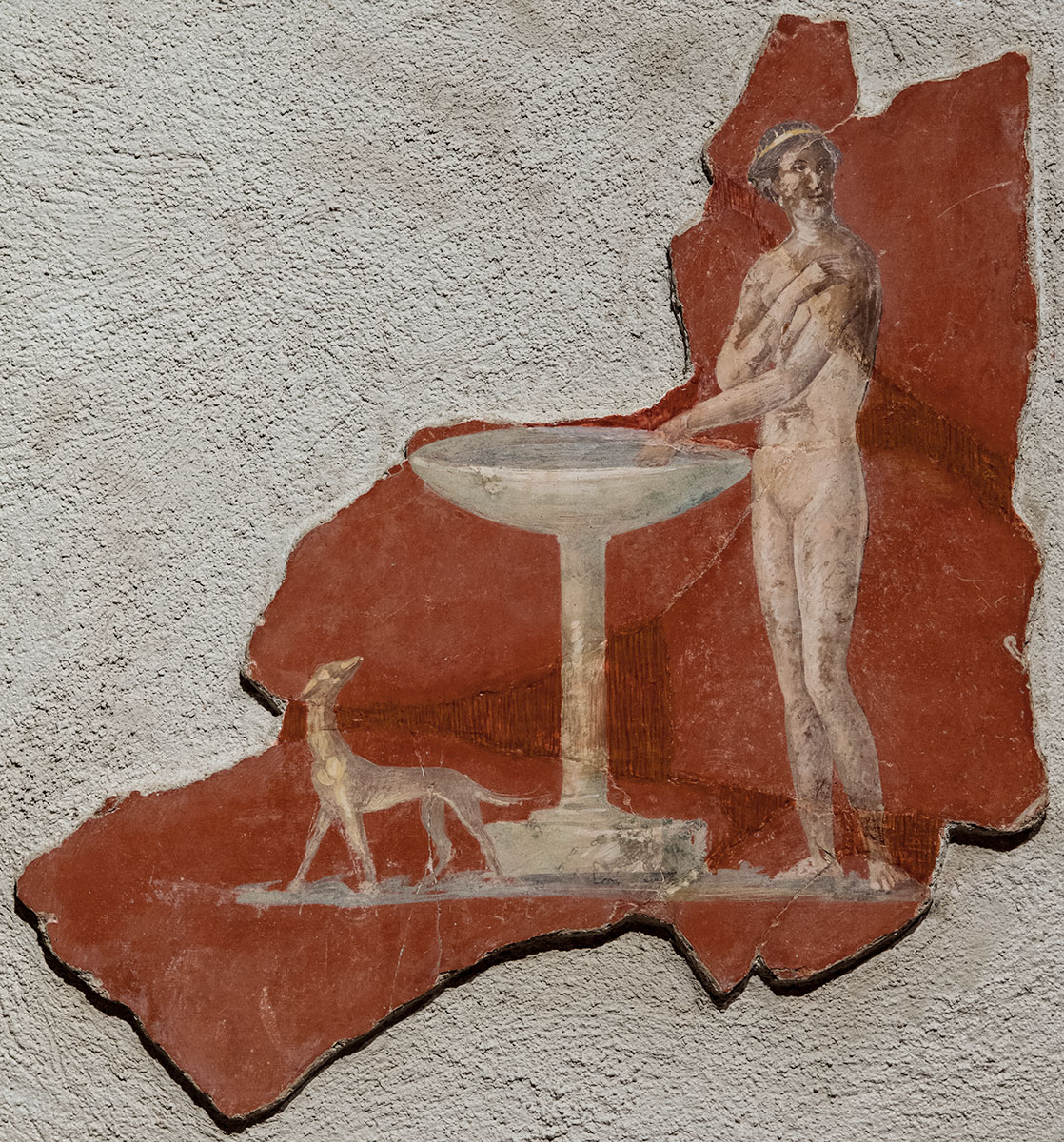
1st century.
H. 41 cm, W. 37 cm. Inv. No. 62521.Pompeii, Archaeological ParkPhoto by Sergey Sosnovskiy
Female figure at the labrum.
1st century.
H. 41 cm, W. 37 cm.
Pompeii, Archaeological Park
(Pompei, Parco Archeologico).
VILLA RUSTICA IN PETRARO — DI SOMMA ESTATE
This villa was discovered and partly unearthed following the chance finding of some ancient walls in a lapilli quarry. The excavation lasted only 15 days in April 1956, and evidenced parts of the surrounding walls of a villa, exhibiting several loopholes, and the ruins of at least four rooms, much damaged by the quarrying operations and leaks from the previous use of the overlying soil for floricultural purposes. In the surroundings, blocks of Sarno river limestone (travertine) and of grey Nocera tuff were found, along with a large amount of dolia (large terracotta storage jars) fragments, all of it previously removed from the villa.
Inside Room 1, partly excavated to avoid threatening the stability of a nearby country road, many red and white plaster fragments fallen from the ceiling littered the ground.
Room 2, measuring 3.45 m × 2. 40 m and accessed from the west through two door jambs built with small tuff blocks, showed bare walls in mixed work and a pounded terracotta floor. Collapsed white-stucco decoration fragments in the First Style were found in it.
Room 3, also partly excavated to avoid undermining the stability of the dig, yielded many fragments of black plaster and pounded terracotta. From the villa also came a terracotta vase decorated with a lion’s head, as well as a brooch fragment. Near the structure, which dates from between 89 BC and 79 AD, a road tract paved with irregular limestone slabs was noticed.
Sources:
P. Miniero, Ricerche sull’ager stabiano, in Studia Pompeiana et Classica in honor of
Feminine figure at a fountain basin
Fresco: 41 cm high, 37 cm wide
Inv. 62521
Provenance:
S. Maria la Carità, Villa Di Somma.
Against a red background, an upright nude woman is shown in the act of immersing her left hand in the water of a tall fountain basin, the right arm bent to cover her breast.
The face, slightly turned to the right, is framed by undulated hair gathered at the head’s back, softly held by a golden net, which along with eardrops, are her only ornaments. To the left there is a dog, walking with the head turned back. The figure echoes the statuary model of “Venus the Virtuous” but the presence of a dog also means that she might be Diana. Collapsed wall slab mended from fragments.
Sources:
E. M. Moorman, La pittura parietale romana come fonte di conoscenza per la scultura antica, Van Gorcum 1988, p. 93.
Fresco restored thanks to the generous contribution by George Fastuca and Family.
Exhibition “Gods, Men, Heroes” (Saint Petersburg, The State Hermitage Museum, 19 Apr. — 23 Jun. 2019).
Text: museum label.
© 2007. Description: AA. VV. Otium ludens. Stabiae — at the heart of the Roman Empire. Catalogue of the Exhibition «Otium ludens» (Saint-Petersburg, The State Hermitage Museum, Dec. 7, 2007 — March 30, 2008). Nicola Longobardi, Castellammare di Stabia (Na), 2007. P. 121.